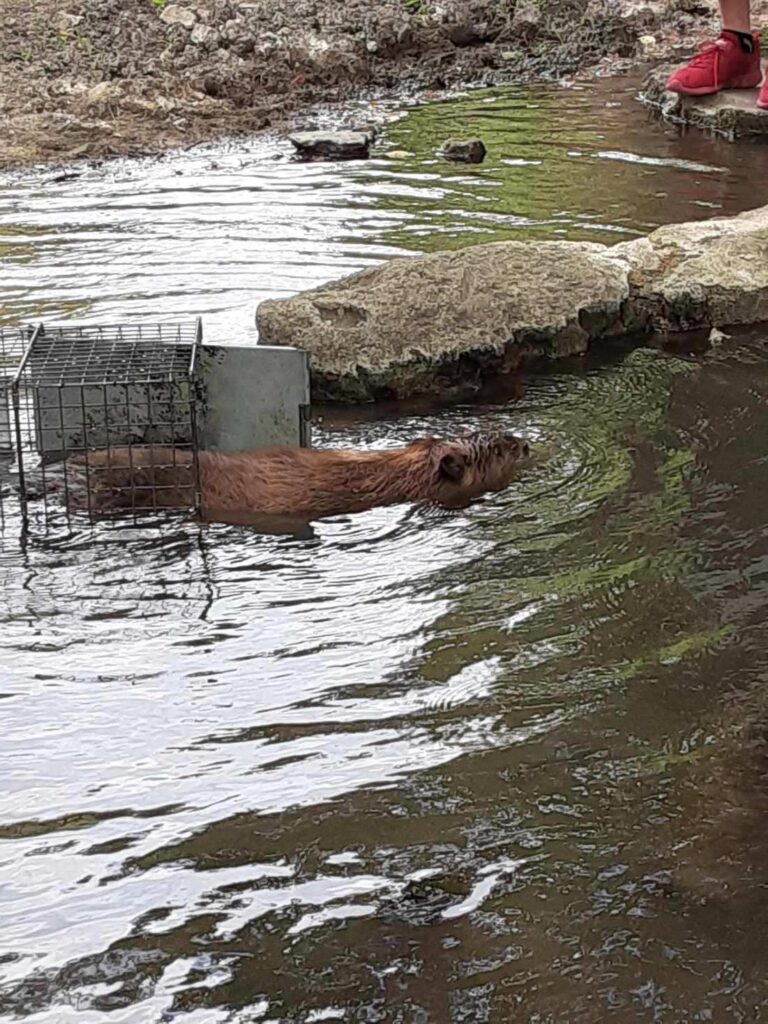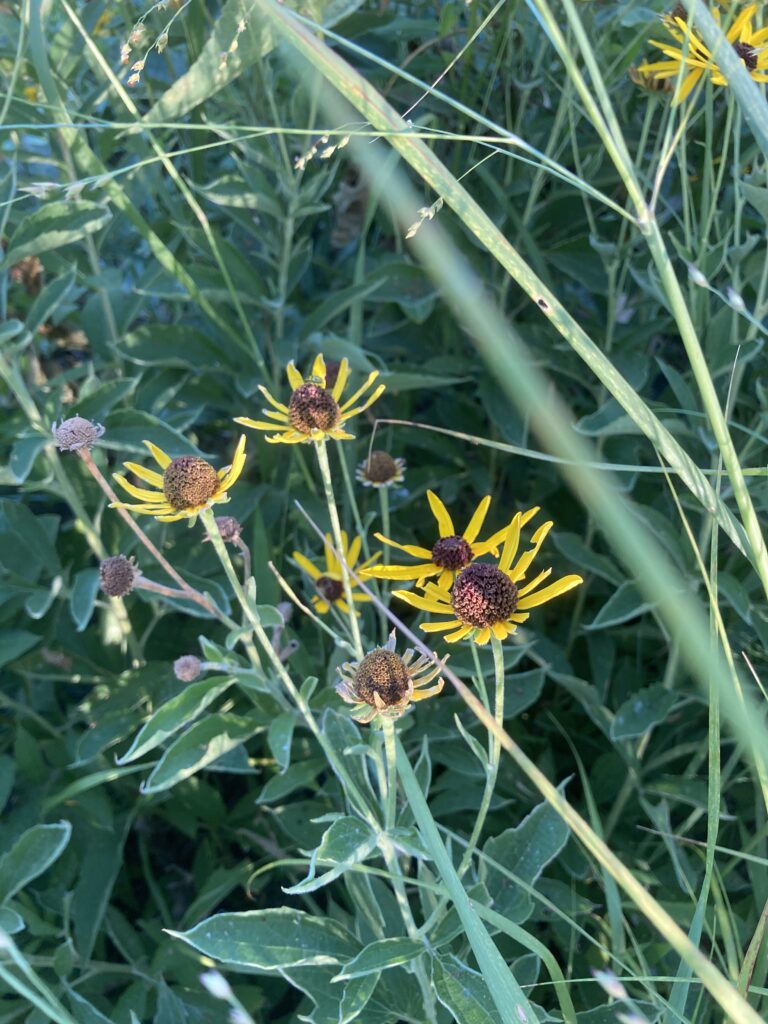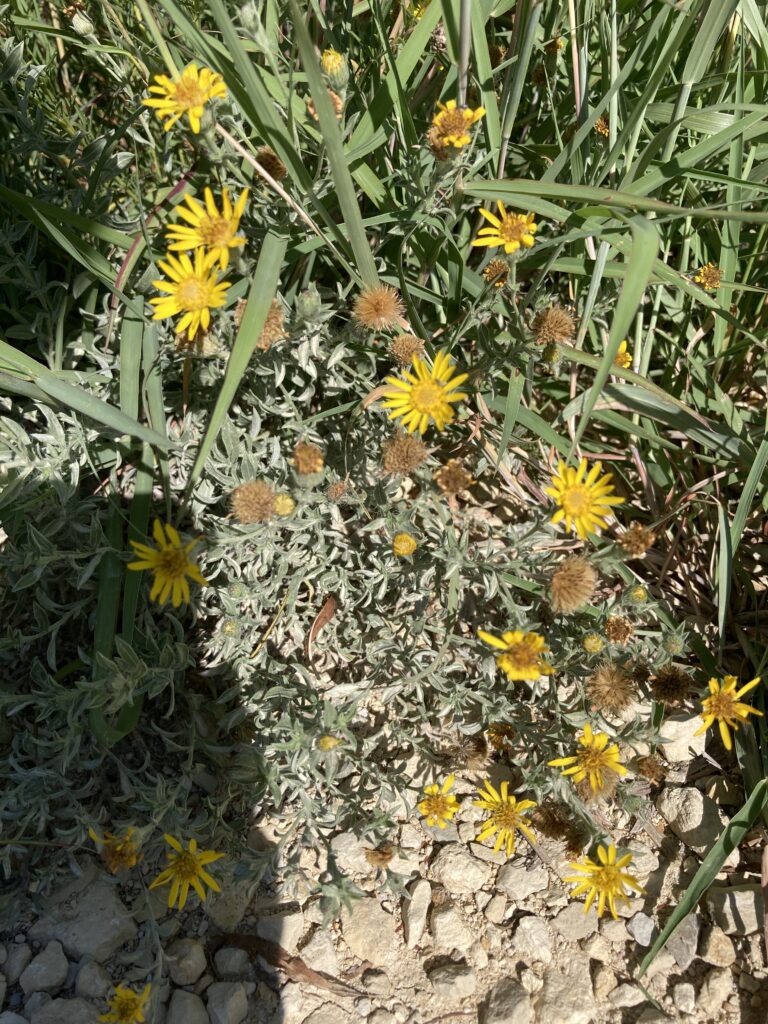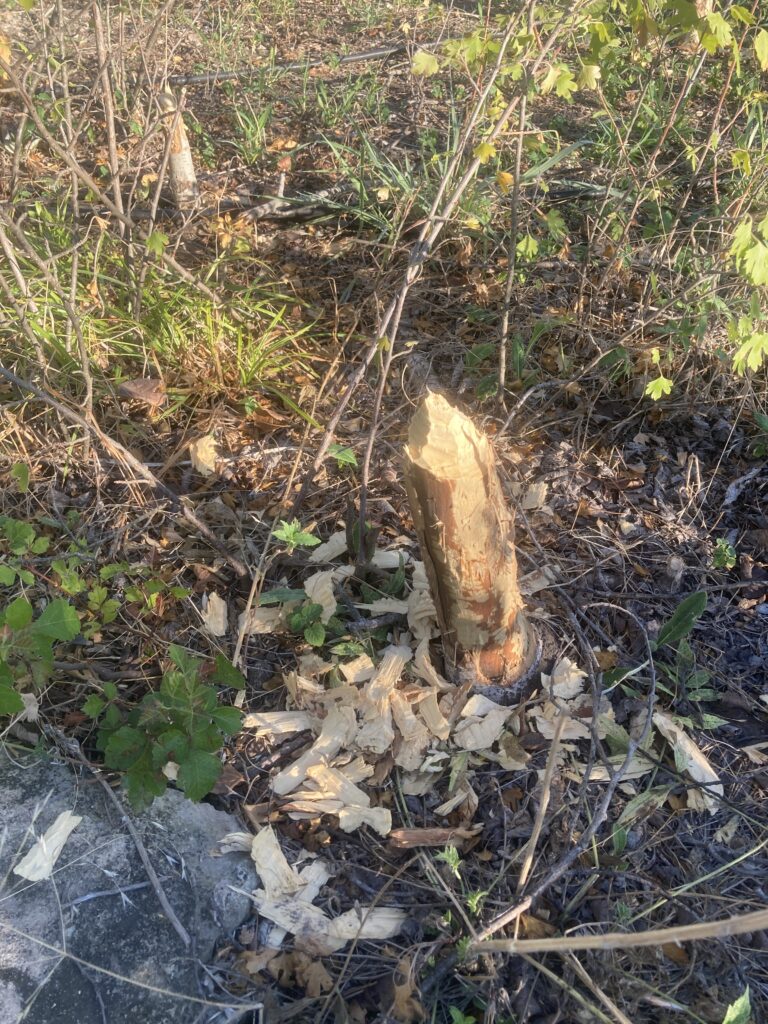While walking on the island recently, I saw a change in the vegetation this year. During the renovation we brought in new soil, drove around, made new ruts, and stirred up the seed bank below. This disturbance altered the landscape enormously, and it will take years to transform back to what it was, if ever.
Annuals
The first thing I noticed is how many more annual plant species there are on the island. Some are weeds – like velvet leaf, Abutilon therophrasti – and some are native species, though they may be unwelcome spreaders, like annual sunflower. These either arrived with the new soil, or were churned up to the surface while driving with heavy equipment. When annuals appear suddenly in a bare patch of an otherwise mature and established prairie, with a little help they will disappear just as quickly. We cut the seed heads off to stop them from returning next year, and soon they will be outcompeted by the perennials and grasses.
But I do hope some annuals stick around! Partridge pea, a favorite of mine and host to Sulphur butterflies, has appeared on the island once again, and I’d like to see more of it seed out. This plant loves tough, disturbed areas, so it is no surprise it showed up here.
New Animal Activity
We have noticed our aspen trees falling one by one, and see the sharp points of their chiseled trunks. We have a beaver on our island! While we have never caught sight of it, it is obviously enjoying our grounds immensely. With the aspens mostly gone from the center of the island, the views have changed. Visibility is better to the east and it is sunnier in the sitting area.
Beavers are shapers of entire ecosystems, and they are integral to rivers and streams. And while I love the idea of having a beaver around, our pond is in fact not a natural water way, and too many of our memorial trees are at risk from our industrious friend. But he sure has caused his share of disturbance around here! The shrubs growing beneath the aspens appreciate the increased sunlight, I am sure. We successfully lived-trapped one of the two beavers, and relocated it to a new pond with the permission of the property owner.

Who Are You?
There have even been a few perennials popping up that are new to me. These might have been in the soil for years, but sprouting only when given open soil and right conditions. One of these is narrow leaf golden aster. A lovely little plant making its debut right along the edge of the gravel path. There is also a large, very conspicuous patch of Rudbeckia subtomentosa that I didn’t know we had on the grounds. Just when I think I have seen every inch of our grounds, it is nice to be surprised by these new flower faces!


Please DO Disturb
Prairies, even tiny ones on the island or in our residential gardens, are meant to change. Nothing is static in nature, and when we humans want it all to stay orderly, predictable and exactly the same year after year, we are playing a losing game. It’s much better to embrace the changes in our gardens and landscapes, and even encourage them.
Some perennials will live fifty years, while others may only live five. Everything has its expected lifespan, so when those bare spots appear in your garden, consider throwing out some native annual seed like Coreopsis tinctoria or partridge pea. These will fill the gap, provide lovely blooms, then fade away once your other plants cover the soil. After all, prairie landscapes evolved to be disturbed, either by fire, flood, or the thundering of bison hooves. Each of these creates open soil for new plants to grow and compete with the existing grasses and forbs.
Are you looking to create a dynamic, ever-changing prairie habitat of your own? Visit FloraKansas Native Plant Days next week and ask staff what native plants will work best in your landscape.


